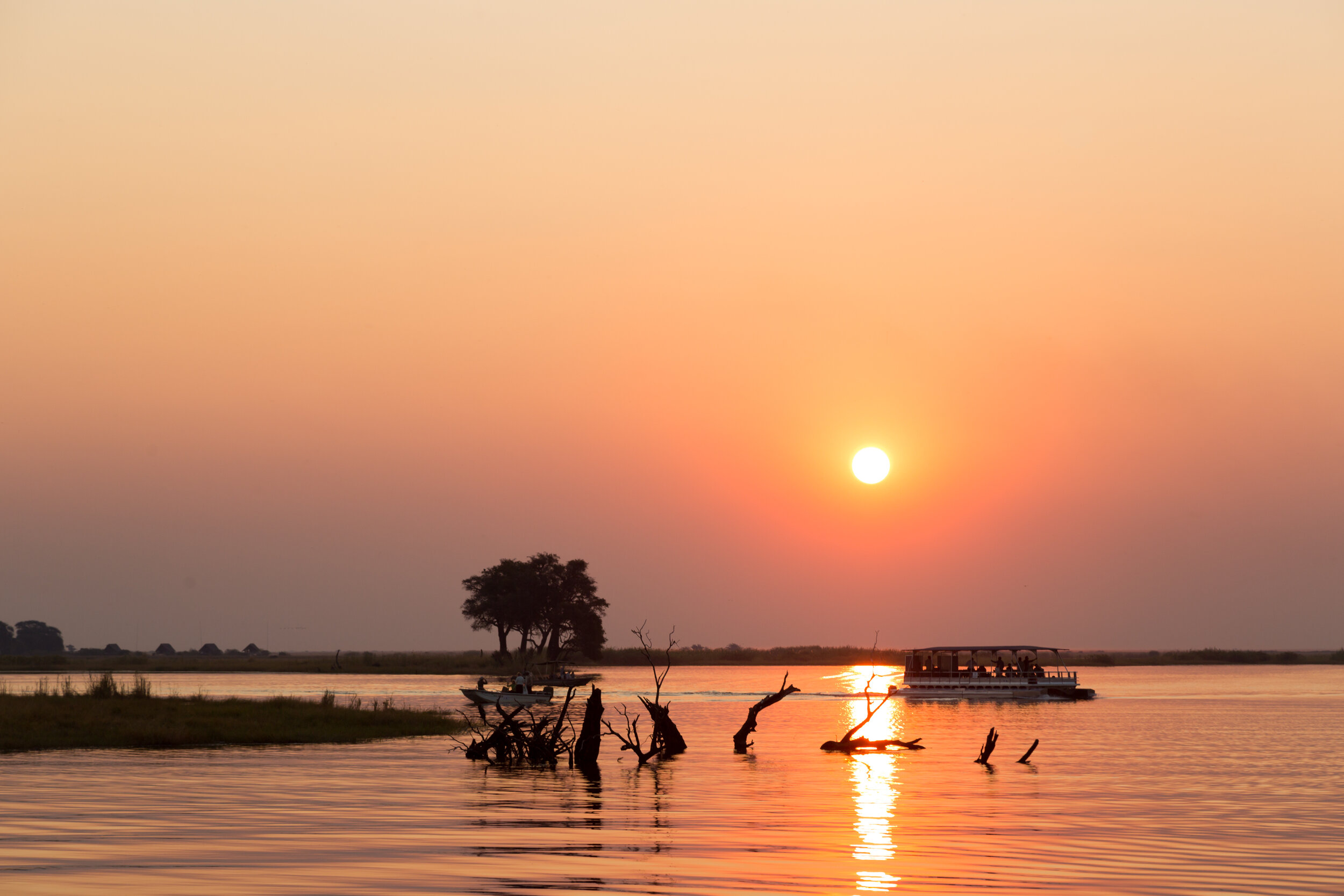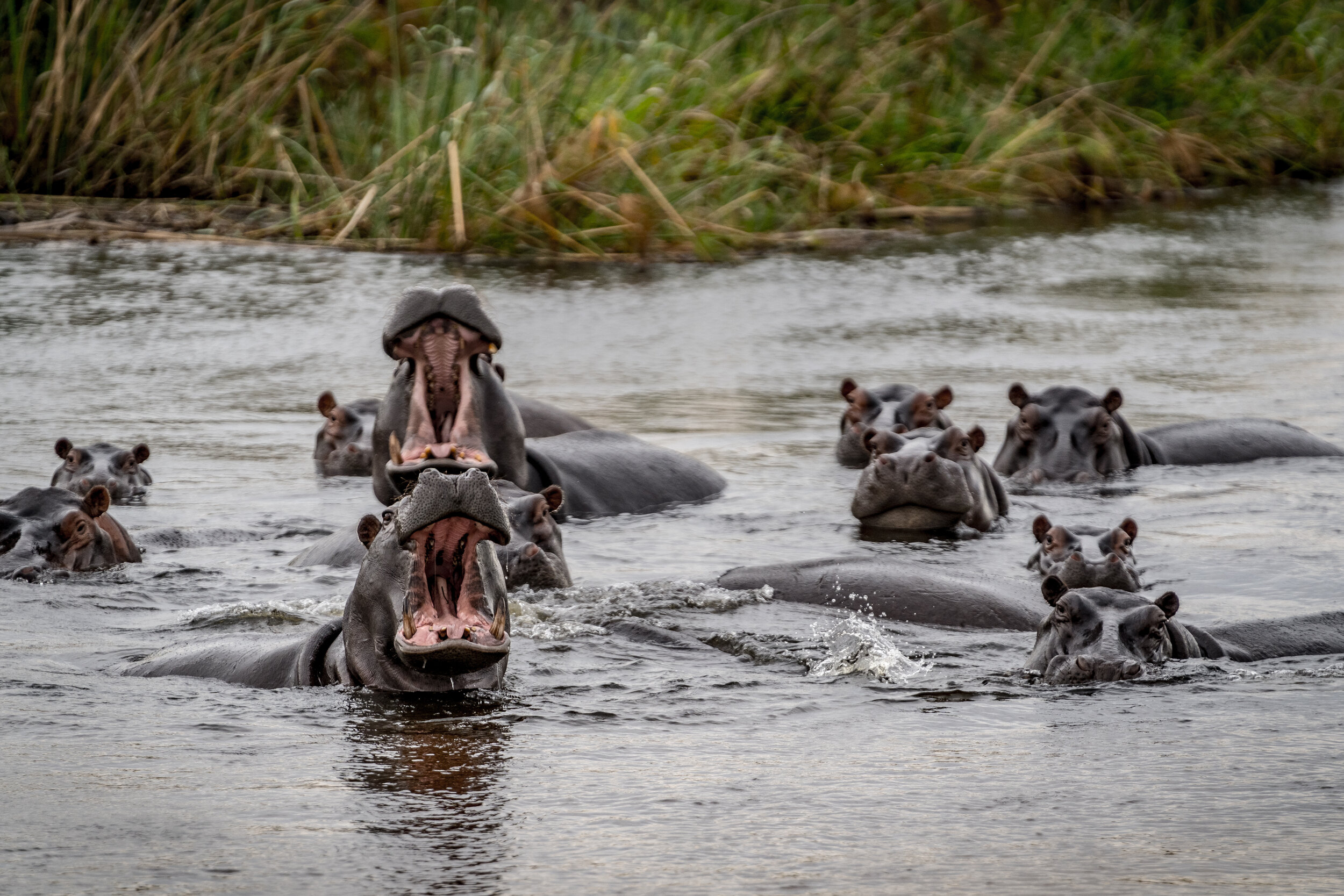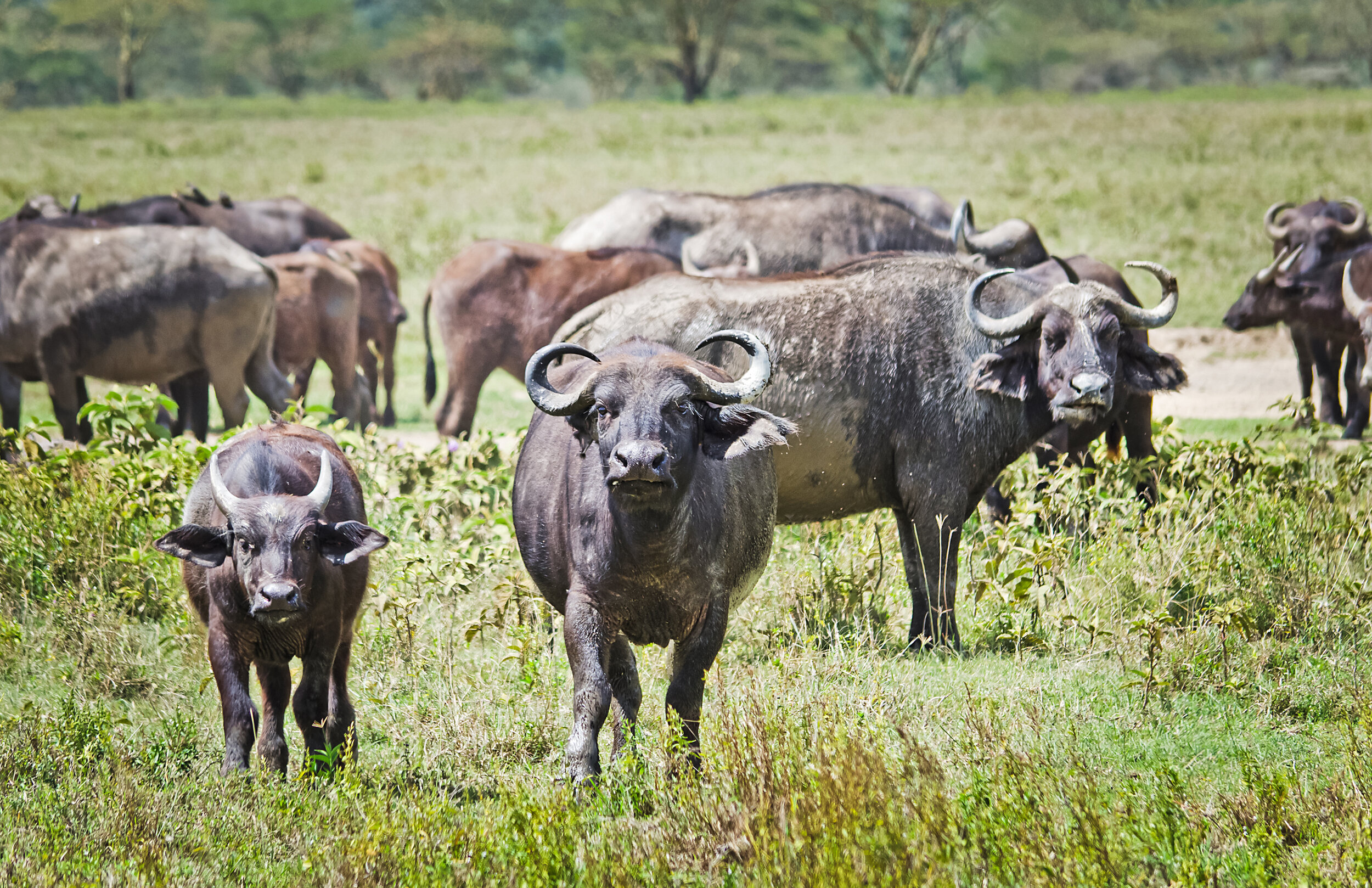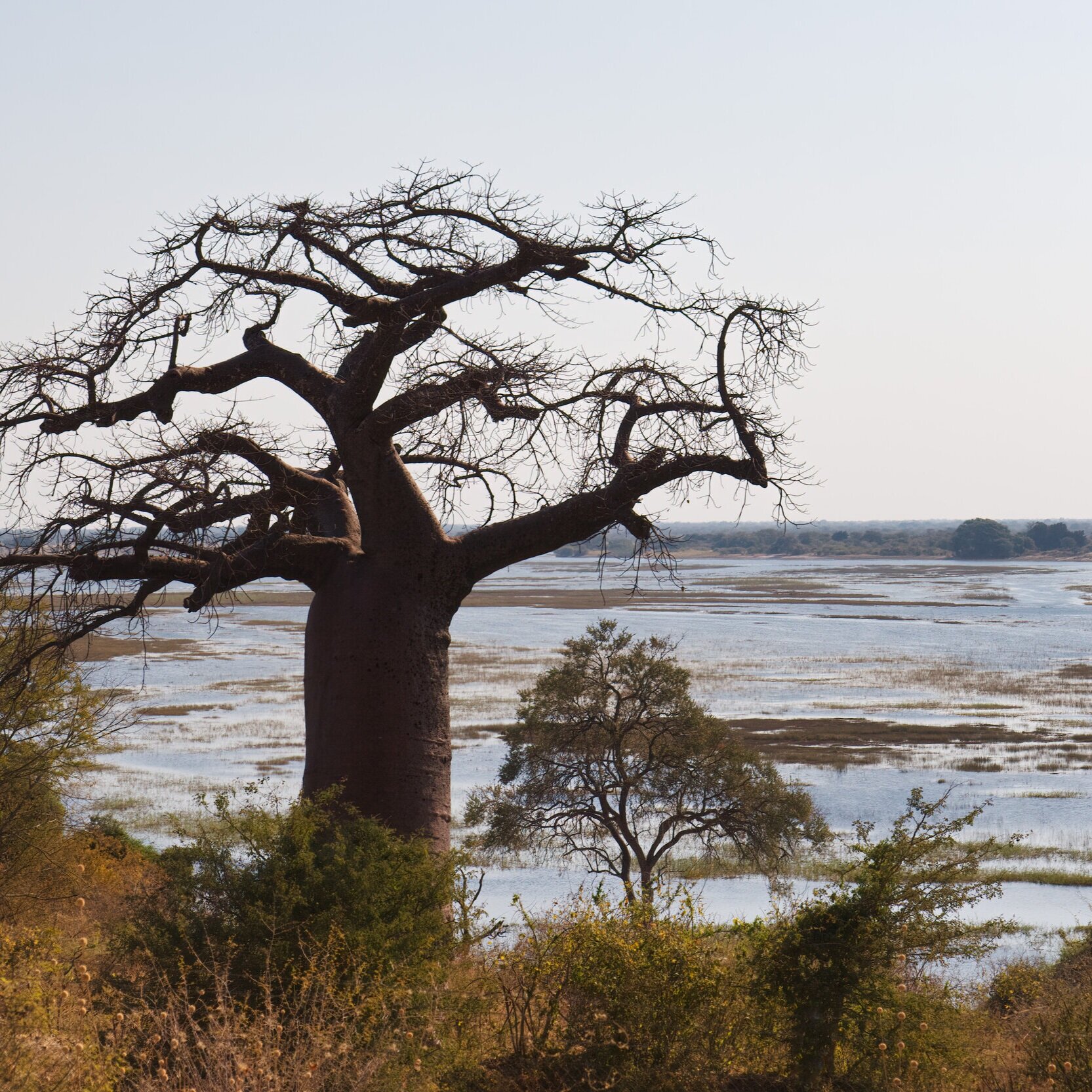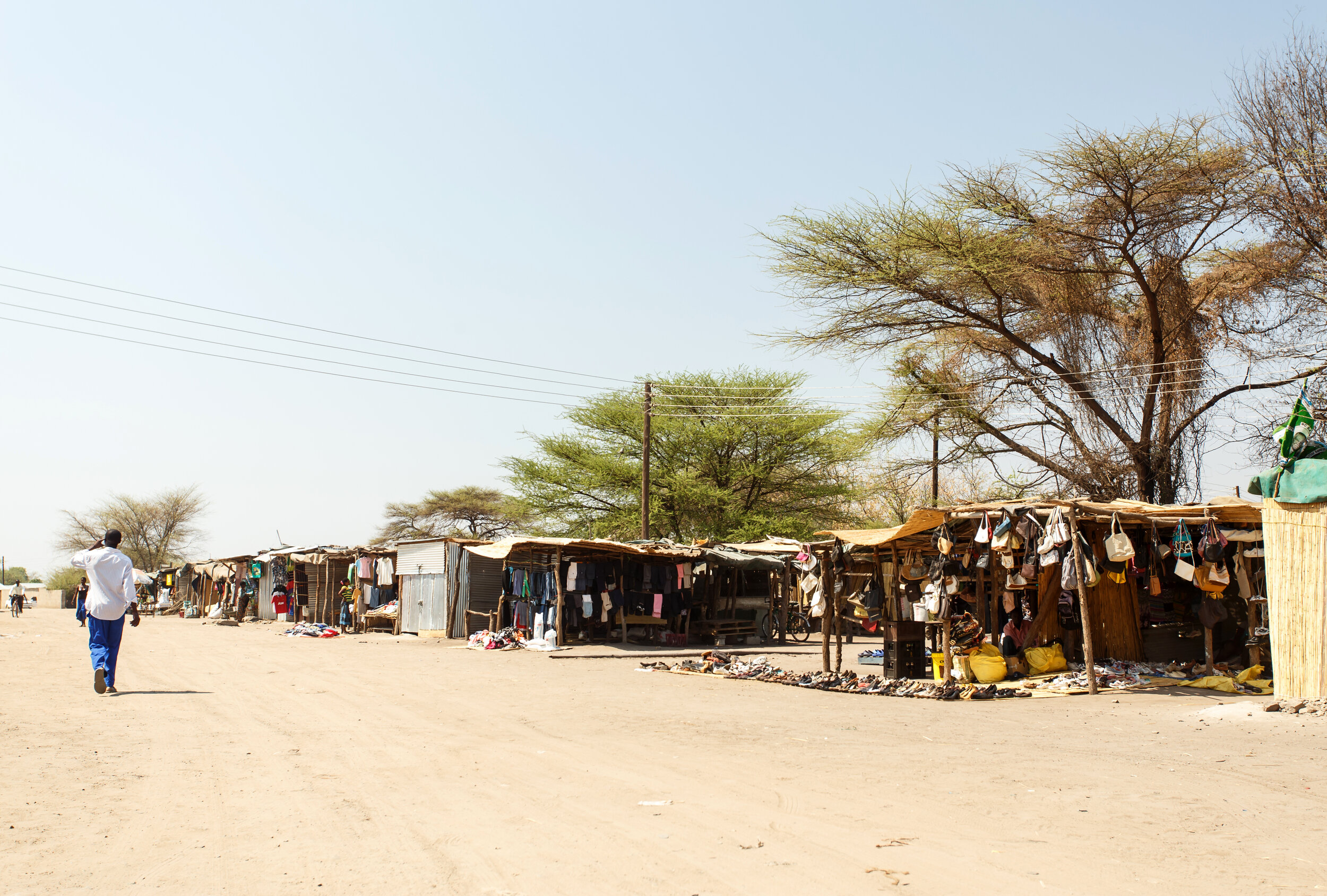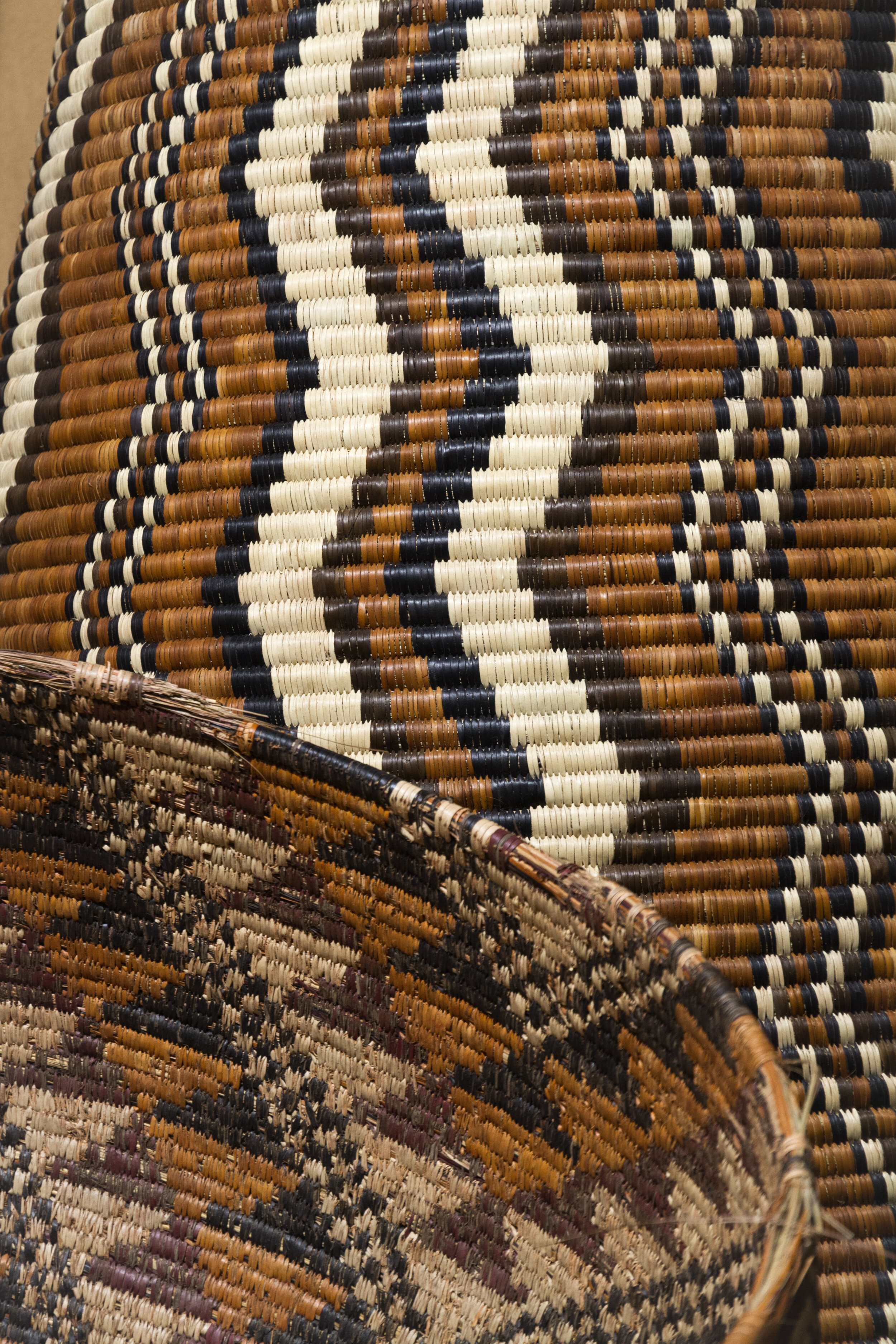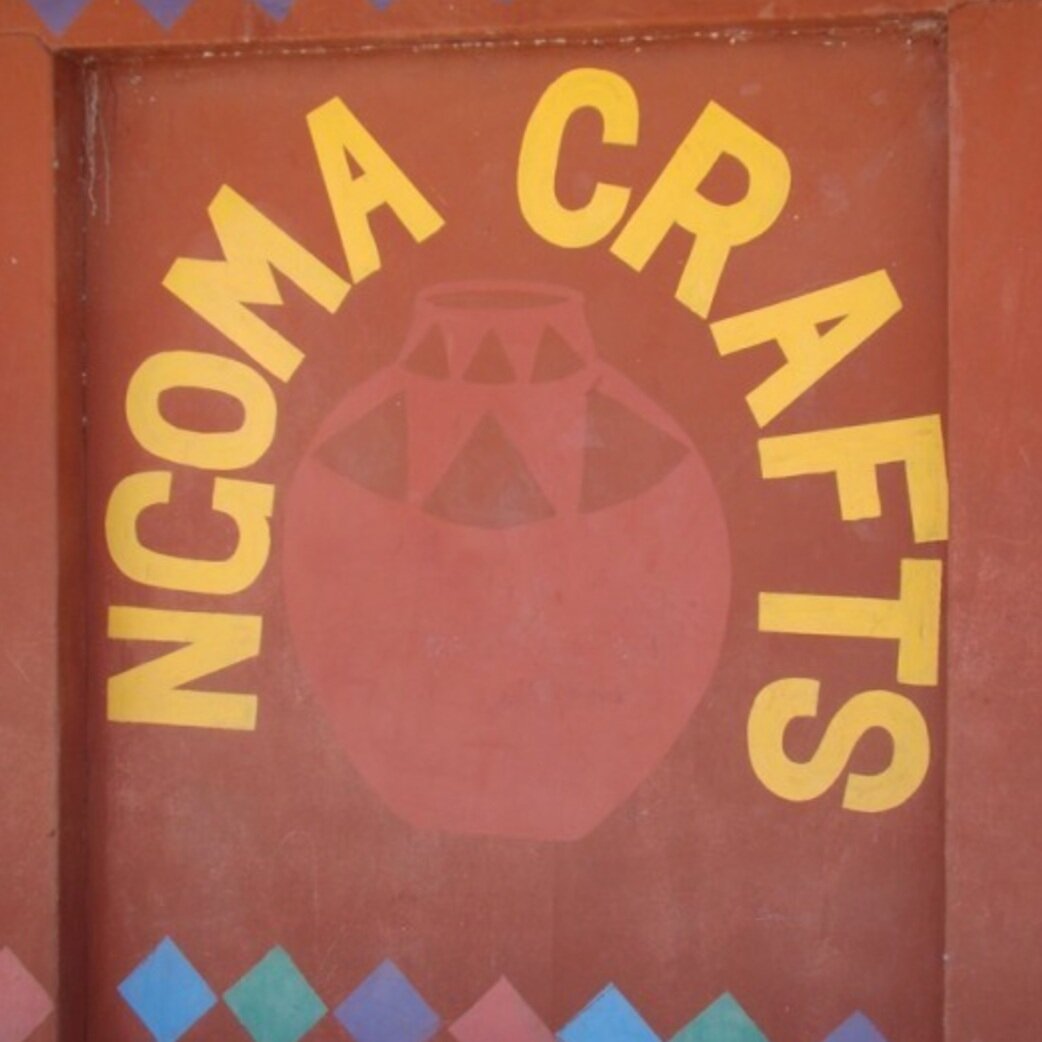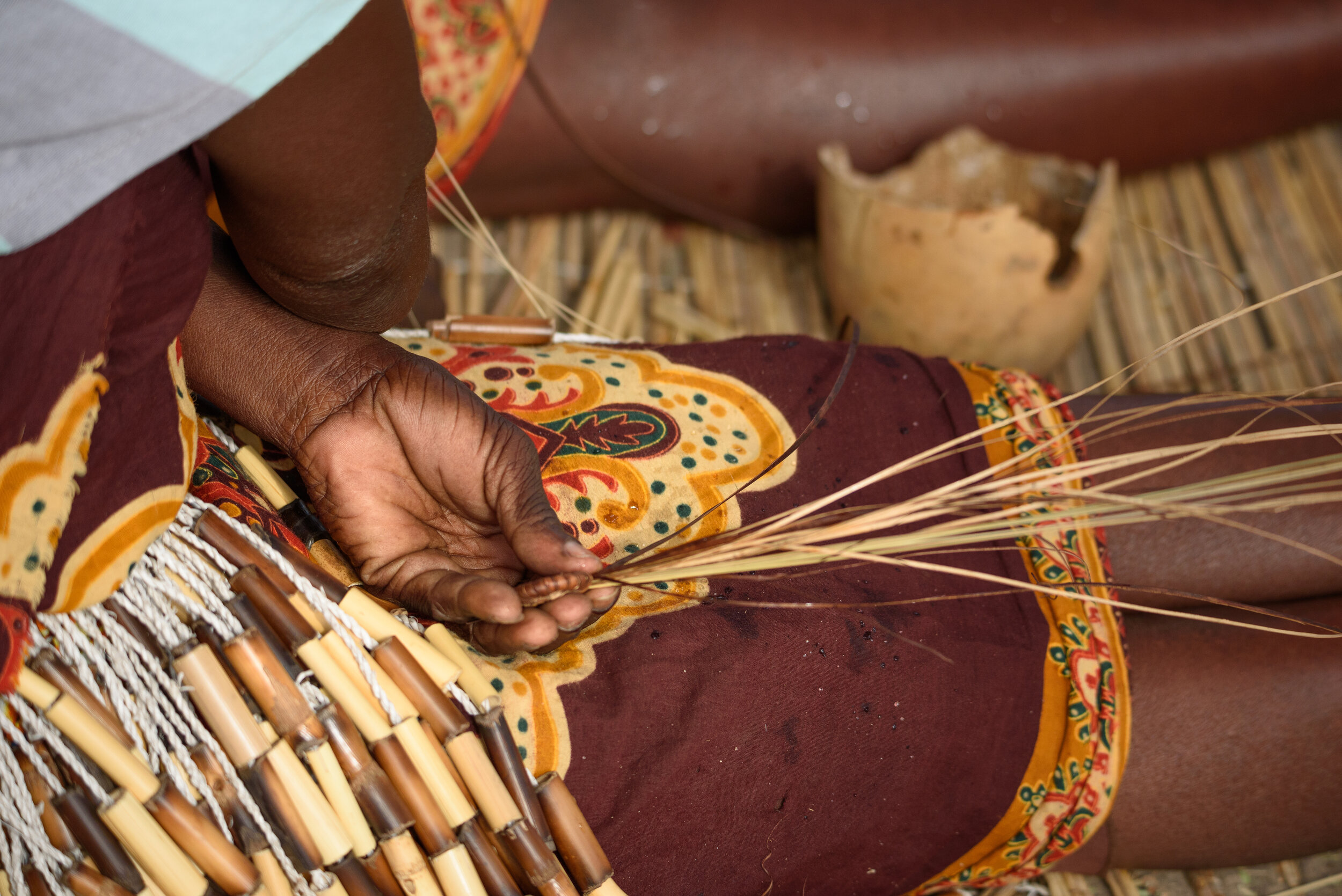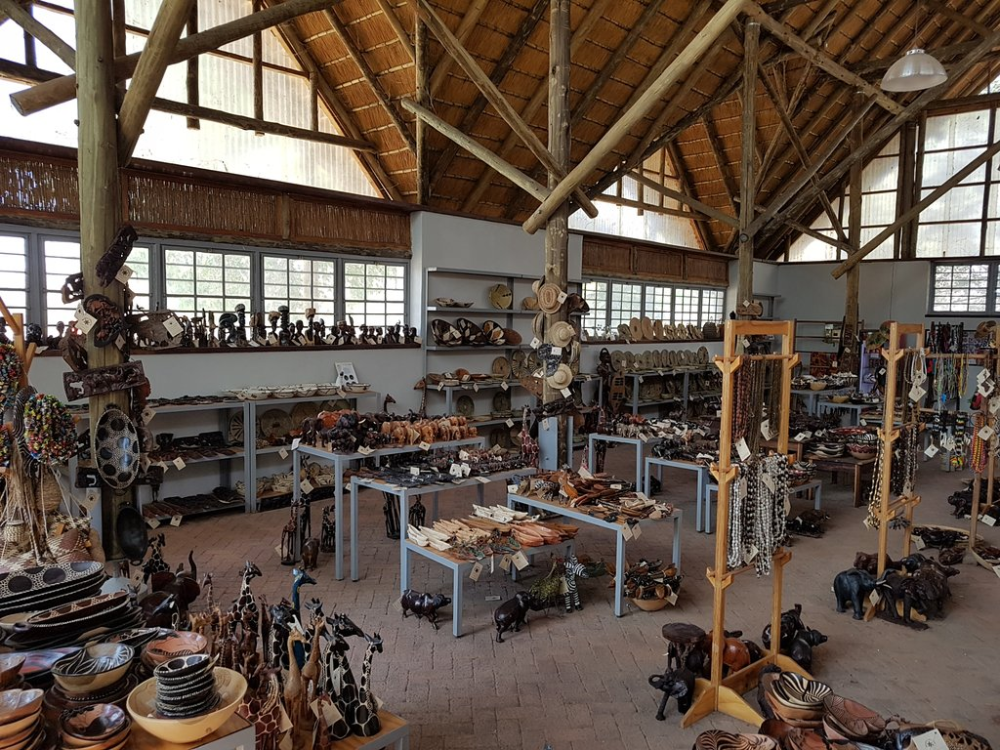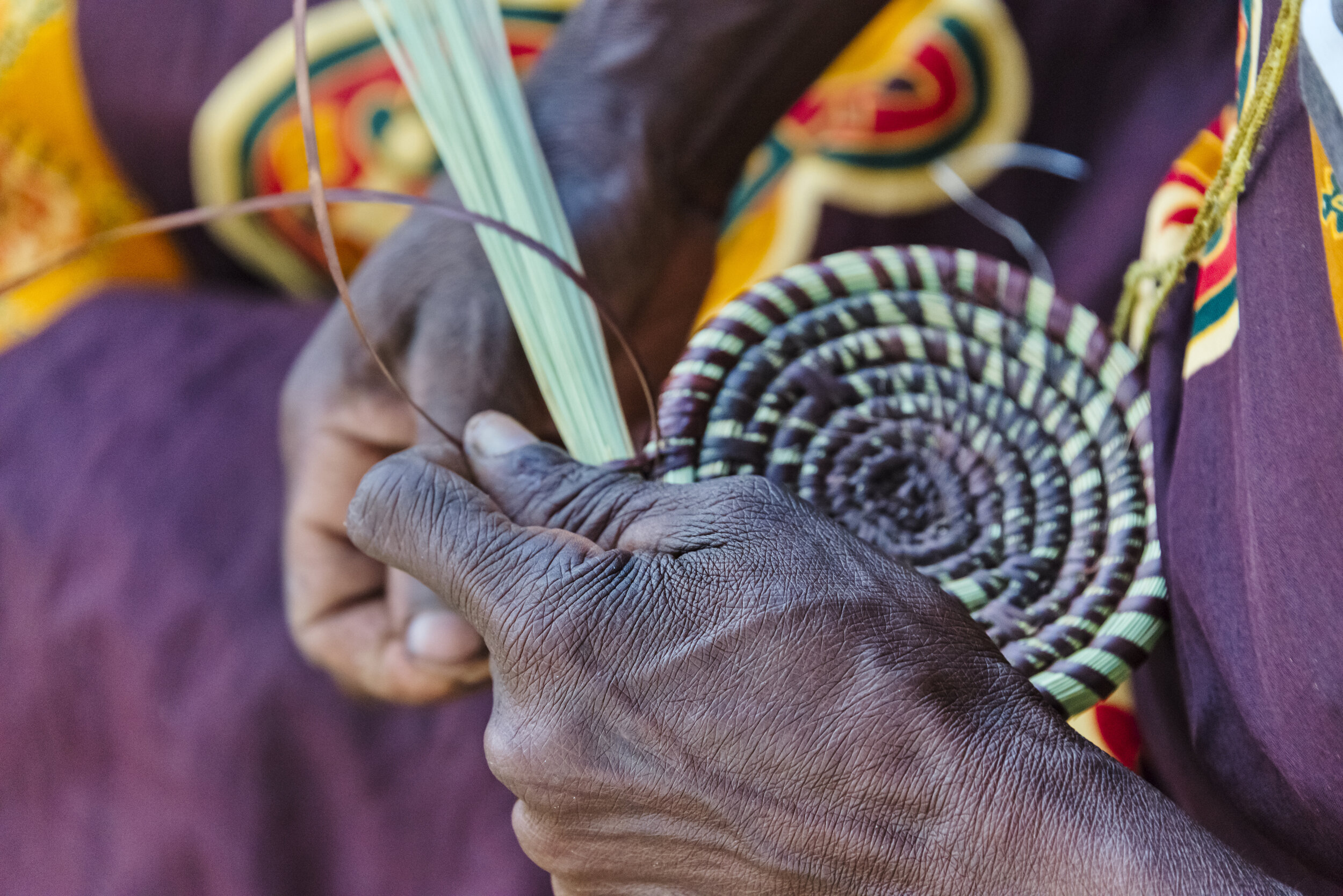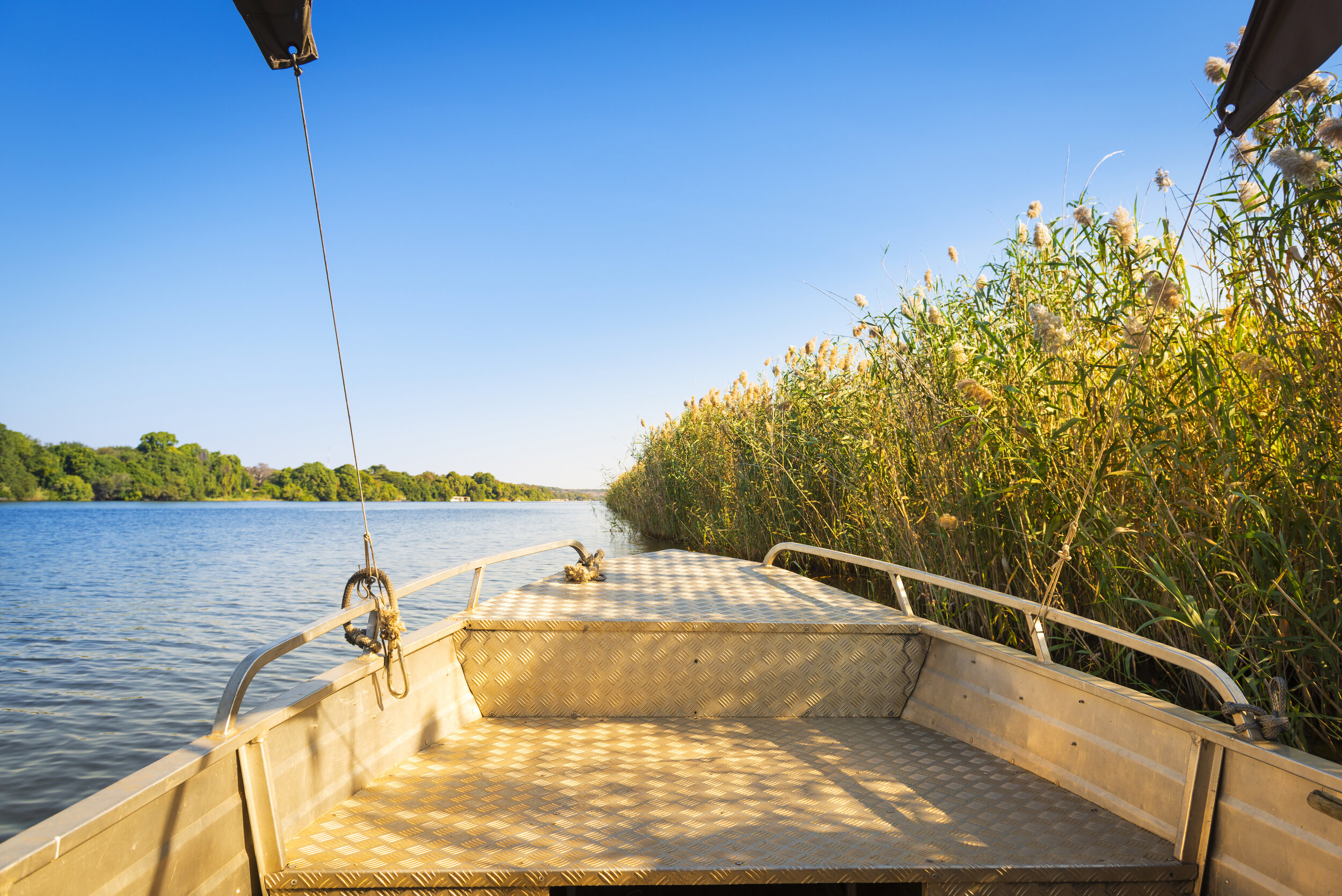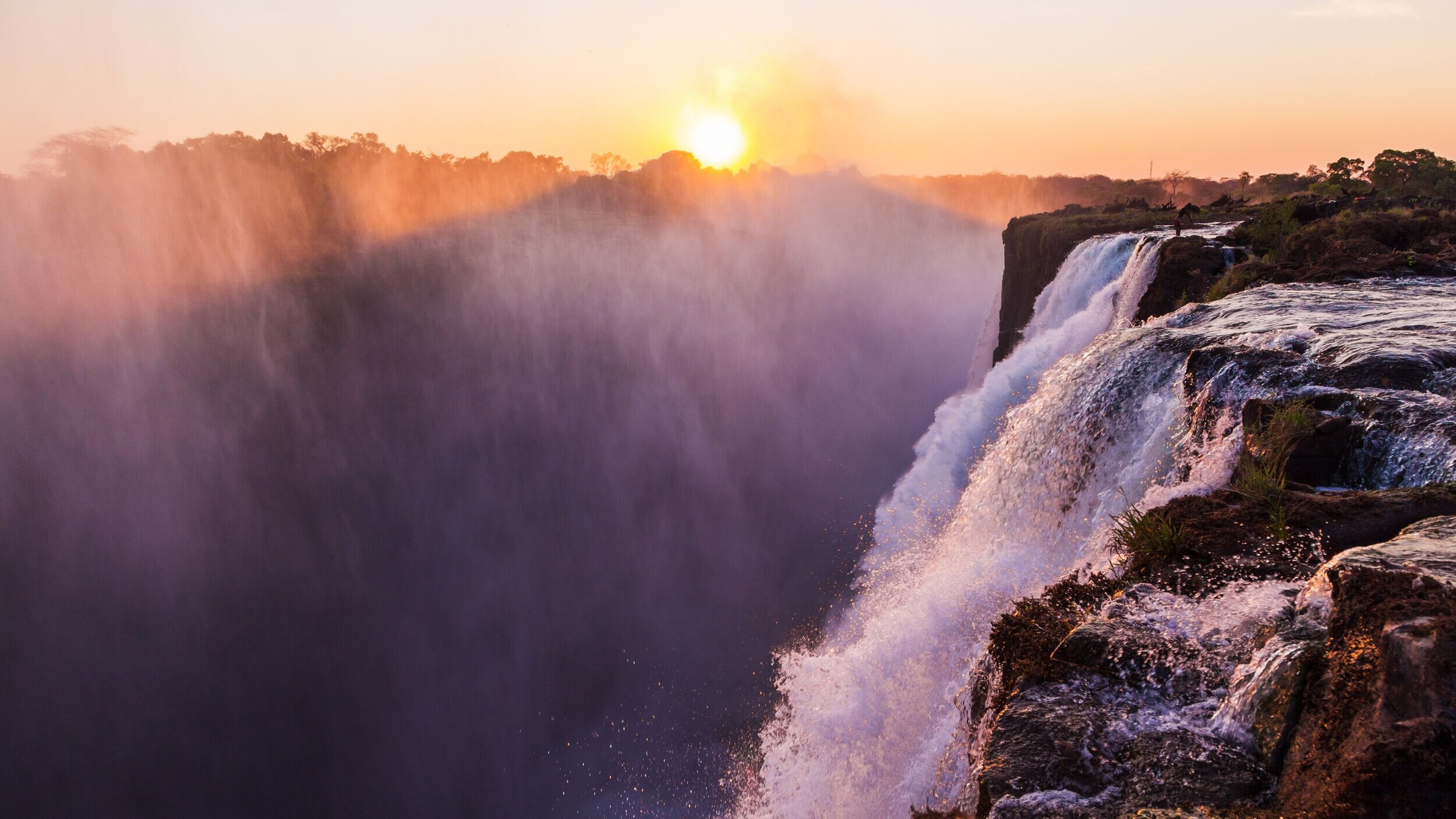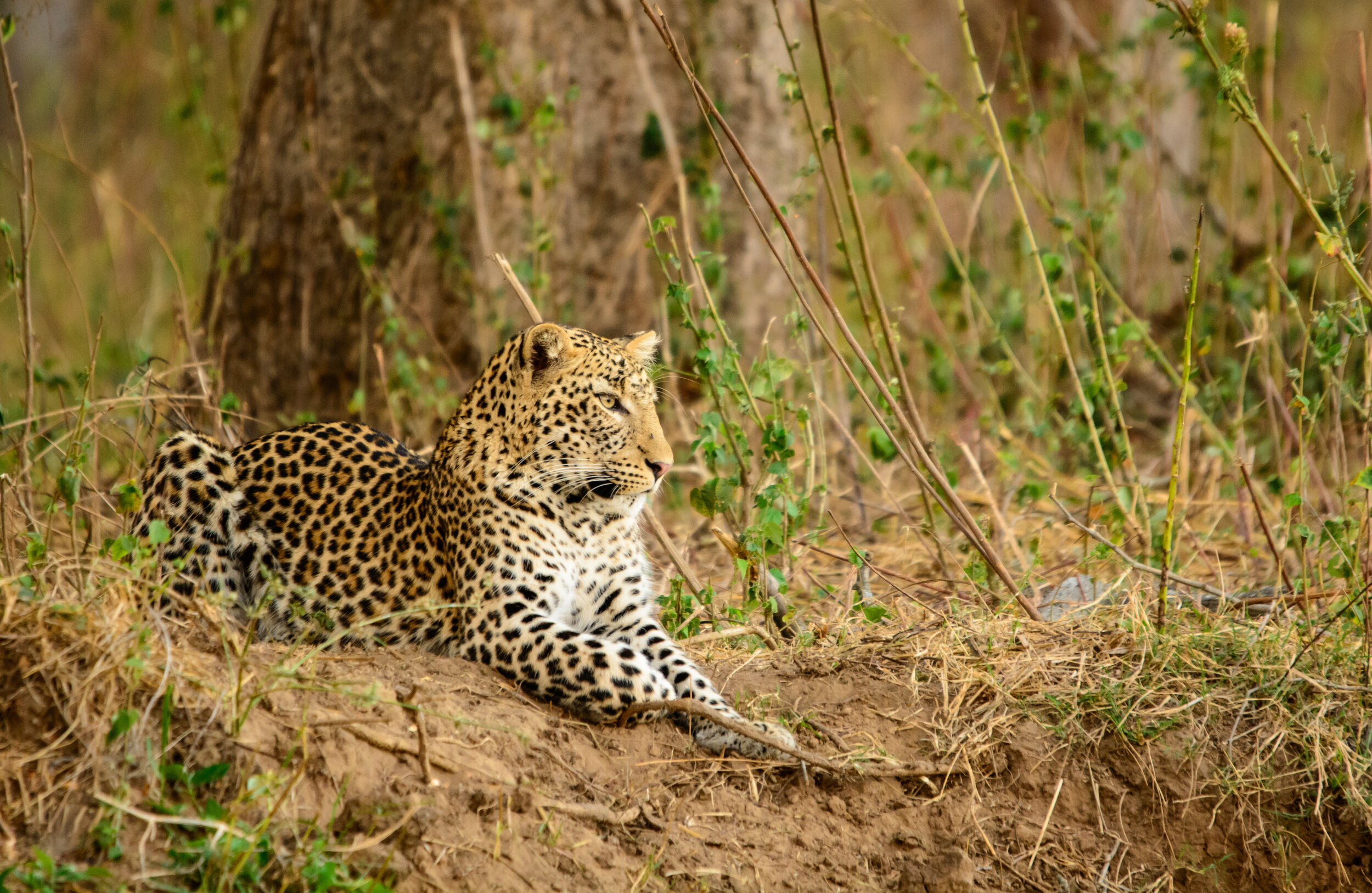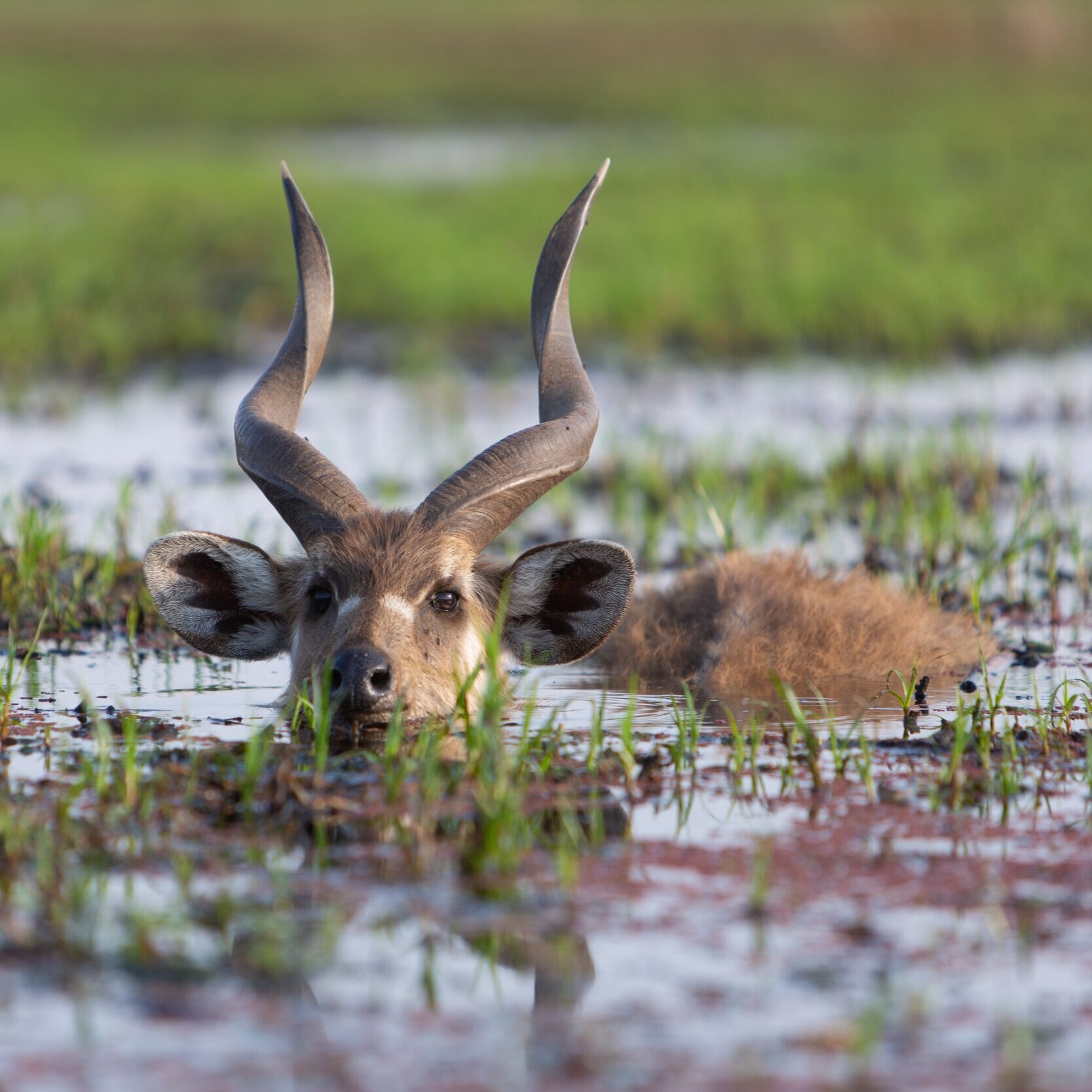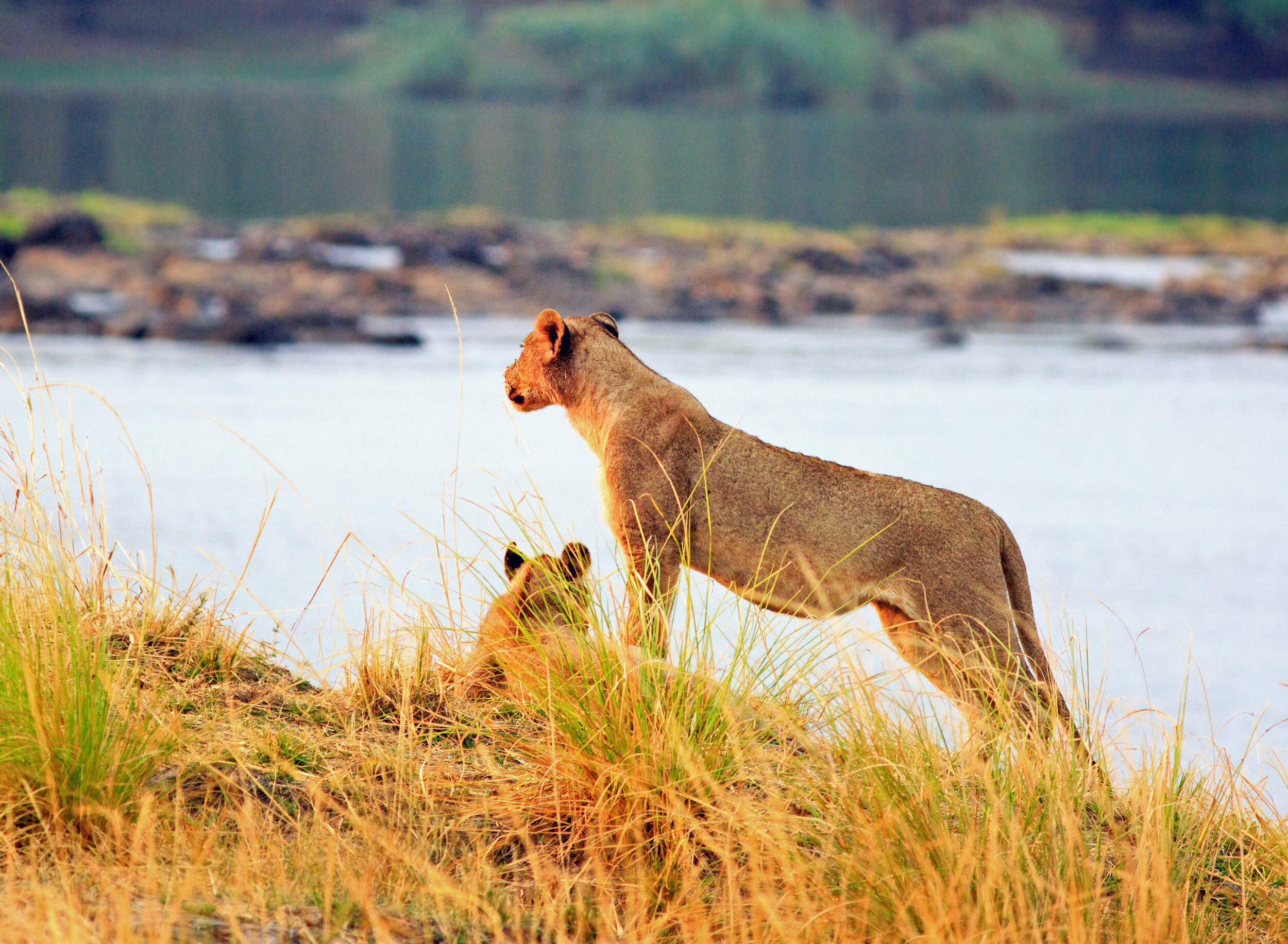A Complete Guide to Namibia’s Zambezi Region
Written by Jess Tyrrell
Travel beyond the desolate and harsh desert-scapes that Namibia is famous for to the far Northeast. You will find an undisturbed and lush Eden teeming with wildlife and scenery you wouldn't normally associate with Namibia. Pinch yourself, because you ain't dreaming!
Formerly known as the Caprivi Strip, the Zambezi Region is a fertile arm-like protrusion that comprises lush riverine forests, flood plains, swamps and wetlands forged by an intricate network of rivers and high annual rainfall. This undiscovered, secret corner of Namibia is an adventurer’s playground, where one can revel in the rewards of taking the path less travelled. Marvel at magnificent giants, including elephants, buffaloes and hippos, peer skyward for flashes of kaleidoscopic birds, tune in to the sounds of giggling zebras and cackling hyenas and enjoy complete solitude, be it on a game drive or a sunset cruise along a meandering river.
If unspoilt nature, a variety of wildlife and successful community involvement are what you're after, the Zambezi is your best port of call. This magnificent destination will undoubtedly test your courage, revitalise your spirit and give you a taste of what sustainable tourism is all about.
Location
The Zambezi Region is a 14.785 km2 slice of heaven located in the extreme northeast of Namibia. It gets its name from the Zambezi River, which runs along its northern border. The Zambezi Region is part of the Kavango-Zambezi Transfrontier Conservation Area (KAZA TFCA), the largest transnational conservation area in the world at 444.000 km2. KAZA includes wilderness areas in Angola, Botswana, Zambia, Zimbabwe and Namibia. In Namibia, Bwabwata National Park, Mudumu National park, Nkasa Rupara National Park, Khaudum National Park, Mangetti National Park, the Caprivi State Forest and Conservancies, and community forests between all these protected areas fall within the Zambezi Region in KAZA TFCA. Katima Mulilo, which translates to “put out the fire” is the Zambezi Region's capital. Katima Mulilo is a vibrant African microcosm, where the languages of the 7 ethnic tribes — Subia, Yeyi, Mafwe, Totela, Mbukushu, Mbalangwe and Khwe — plus many more dialects are spoken amidst the traditional villages that border modern-day city comforts. This bustling town has several shops, banks and small businesses where you can stock up on much-needed supplies before gallivanting into the untamed wilderness.
How to get there
By car
Getting to the Zambezi Region is a breeze. A wide, tarred road has replaced the dusty streets of the past to form the TransCaprivi Highway (or B8) – a 575 km route that connects Namibia, Botswana, Zambia and Zimbabwe. If you travel from Botswana, you will enter the east of the Zambezi Region at the Ngoma border post at Ngoma Bridge. Ngoma border is about a 40-minute drive from Kasane airport in Botswana and a 1-hour drive to Katima Mulilo in Namibia. The route is on the tarred B8, which is in excellent condition, just mind the dazed cows and goats that cross at a whim! If you travel from the interior of Namibia in the west, you will take the B1 from Windhoek until you reach Otavi on the eastern side of Etosha National Park. From here, you will take the B8 to the Zambezi. The Zambezi is a 12-hour drive from Windhoek, so we suggest stopping over in Etosha east and Rundu — the riverside town on the Kavango River home to Namibia's Kavango woodcarvers — en route. If you are travelling from Zambia, you will take the RD325 along the Zambezi River to Wenela Border Post, popping out directly into Katima Mulilo once you pass through.
By plane
You can also fly directly to Katima Mulilo Airport, 20km outside of the town, with Air Namibia.
Best time to go
The Zambezi Region is a year-round destination and is never crowded! If it's wildlife you're after, the best time to visit is in the dry winter months from May to October, when the vegetation is thinner and animals flock to available water sources. If you would like to avoid the sweltering summer heat, visit between May and August.
What to do
Main attractions
Undoubtedly, the most rewarding and thrilling experiences in the Zambezi Region can be had at and owed to the four perennial rivers — the Chobe, Kwando, Linyanti and Zambezi — that are teeming with aquatic and terrestrial animal species. In the Zambezi, you can enjoy safaris on land and the water for a refreshing and eye-level perspective of wildlife! Think birds, elephants, buffalo, lions, hippos and much, much more, all frolicking in serene greenscapes.
Experience abundant wildlife in the National Parks
There are 5 national parks and reserves across the Zambezi Region's wetland paradise, each with unique vegetation and wildlife.
Khaudum National Park
This 3.842 km2 densely wooded park borders Botswana and is considered a "forgotten wilderness". More than 300 bird species (twitchers, do we have your attention?) and charismatic mammals such as elephants, lions, giraffes, leopards, hyenas, jackals and African wild dogs call this undisturbed conservation area home. It is super remote, and some adventurers will find traversing through the park challenging owing to the sandy and sometimes flooded roads. For this reason, you have to travel with a minimum of 2 4x4 vehicles per group, have food and fuel provisions for 3 days and ample drinking water (100 litres per vehicle per day). Fuel is only available at Bagani, Divundu, Mukwe and Rundu in the Kavango Region. The best time to visit, and also the most rewarding, is in the dry winter months, from June to October. The only accommodation in the park is at 2 tourist camps with basic facilities. Go on game drives to the 12 waterholes and 2 natural springs and visit the hides – discrete structures on the water's edge that you can sit in to watch beasts and birds go about their business.
2. Bwabwata National Park
Named after the sound of bubbling water, this 6.100 km2 expanse of wilderness heralds an inclusive and integrated approach towards park management. Not only does it protect the environment, but also the people that live in the park. The centre of the park is zoned for community-based tourism, where communities instigate joint tourism ventures with hospitality groups or individuals. The Mayuni conservancy chose African Monarch Lodges to undertake tourism operations in the park, and they have established trailblazing camps and lodges at the forefront of sustainability. Bwabwata is home to 35 large animal species, including elephant (that migrate through the park), buffalo, reedbuck, impala, red lechwe, sitatunga, hippo, giraffe, zebra, wildebeest, Chobe bushbuck, tsessebe and sable and roan antelope. There are also fierce predators, such as lion, leopard, African wild dog and cheetah. These animals and many colourful and endemic birds congregate around the Okavango and Kwando Rivers, making for stunning sunrise and sunset photography.
3. Mudumu National Park
Centred on the Mudumu Malapo fossil river course, this sprawling 1.010 km2 expanse of savannah and mopane woodland is a sanctuary to rare sitatunga, red lechwe, spotted-necked otters, hippos and crocodiles. You will likely see elephants, buffalo, kudu, impala, Burchell's zebra, and roan antelope on a game drive. There are more than 400 bird species to spot and add to your lifer list for the avid birders out there! Exceptional sighting opportunities include Slaty Egrets, Hartlaub's Babblers, Greater Swamp-Babblers, Swamp Boubous, Wattled Cranes, Rosy-Throated Longclaws, African Pygmy-Geese and Comb Duck, Allen's Gallinule and African and Lesser Jacanas.
4. Popa Game Park
Popa Game Park is a discrete 25.000 ha wilderness centred around Popa falls on the Okavango River. The sounds of the rushing rapids and rustling leaves in this idyllic and tranquil Eden typify the park. Here you can watch the river cascading down rocks while admiring over 400 bird species and angling for lucrative fish species.
5. Nkasa Rupara National Park
This 320 km2 wetland is the largest wetland area with conservation status in Namibia! This park is wet – and wild - with several networks of channels, oxbow lakes and islands. In the wet season, 80% of the park can be in flood! When the park is accessible (in the dry season), you can see elephants, hippos, crocodiles, buffaloes, lions, wild dogs and spotted hyenas. There is only 1 place to stay inside the park, at Jackalberry Tented Camp, however, Nkasa Lupala Tented Lodge is at the park gate, and there are campsites nearby.
In Katima Mulilo
If you have some time to kill while in Katima, check out the 900 m long Katima Mulilo Bridge that carries the TransCaprivi Highway over the Zambezi River for great photo ops.
You can also visit the vibrant open market in the centre of town, where you can engage with locals and gain a glimpse into the daily lives of Namibians. Marvel at the craftsmanship and skill of talented Zambezians who continue to make traditionally woven baskets and pots, famous for their distinctive beauty and symmetry, at the Katima Craft Centre next to the open market. If you happen to be in Katima in the last week of September, you can experience the annual Lusata Festival! Join the festivities celebrating the traditional values, histories and futures of the Mafwe people, one of the largest ethnic groups in the region. Most people from all villages in the Zambezi come to celebrate by dancing and feasting.
Speaking of feasting, if you fancy a restaurant meal, you can get affordable and yummy meals in a garden setting at Green Basket Café, from where you can also book tours and activities. Alternatively, enjoy a hearty meal at Baobab Bistro, or a refreshing drink at the festive Bezi bar, the local hangout.
If you’re so inclined, check out the infamous Katima baobab, an intriguing public flush toilet with a lot of history, housed in a hollowed-out trunk of an ancient baobab tree!
Arts & Crafts Centres
The Zambezi Region is renowned for the artistic — and valuable — talents of local crafters. These crafts are often flaunted along the road but also at craft centres around the Zambezi Region. These locally run centres are the best spots to buy souvenirs and keepsakes and learn a thing or two about the traditions of Zambezians. They promote the marketing and development of products in local communities, and each have over 100 members, from potters to carvers and weavers.
In addition to the Katima Craft Centre, there is Ngoma Crafts Centre near the Ngoma border post. The Craft Shop and Café make for an attractive place to stop to do last-minute souvenir shopping and buy a cool drink or coffee before embarking on the rest of your journey. If you have time to book in advance, you can learn how to make a basket, reed mat, a clay pot or join the carvers fashioning something to take home with you.
Mashi Crafts trading post in Kongola (outside Bwabwata National Park) is an outlet for crafts and other natural products from the communities on the west and east of the Kwando River. 13 community conservancies and 4 extra groups supply this market as crafters from nearby Zambia and Zimbabwe. It now runs independently and has also expanded to serve tourists and visitors to the area. Here you can find baskets, carvings, jewellery, chitenge cloth and the mokolo chitenge collection, Ecoso natural devil's claw remedies, honey in season, firewood and cool drinks.
African Monarch Lodge's Sijwa Project:
African Monarch Lodges' Sijwa Project recycles glass waste from their lodges into magnificent sellable jewellery pieces. Local conservancy members have been taught how to create these glass beads using a low impact kiln at the project premises, where they also construct the statement pieces that the public can purchase. The project also upskills and employs locals to use sewing machines, which they use to make beautiful upcycled and sellable garments. Pay a visit to the Sijwa project on the C49 to see this inspiring initiative in action.
Visit a traditional village
Lizauli Traditional Village
Lizauli Traditional Village is a community tourism product that gives visitors a glimpse of life in a traditional village. Here they show visitors how to stamp millet, how grain used to be stored, the chicken house (stantwe), and transportation. You can also see how blacksmiths forge metal tools and knives while an assistant operates the handmade bellows. Visitors also have the opportunity to interact with a traditional healer (sangoma) and experience traditional dancing. The Lizauli Traditional Village is just off the tarred C49, 33 km south of Kongola.
Mafwe Living Museum
The Mafwe Living Museum is an authentic open-air museum where guests can learn about the traditional culture and living of the Mafwe. The Living Museum consists of a traditional village and its surrounding fields on a beautiful hill with a view of the Kwando River. Colossal baobab trees cast shadows for the guests while the Mafwe present their old, almost forgotten culture in traditional dresses. The actors of the Mafwe Living Museum demonstrate and describe everything with great dedication, and the guide translates into English. Virtually every offered program is interactive: try to weave a traditional net or taste some provided meals. A visit to the Living Museum is an unforgettable experience! You can find it at the end of the D3502 road, 16km north of Kongola.
Activities
The Zambezi is renowned for excellent animal viewing, fishing and birding. Activities in the region centre around these unique attributes, primarily at the riverfront.
Game drives
There are 5 national parks to explore, each with its fair share of charming critters. If you are staying outside of the national parks, intrepid adventurers in 4x4s can pay a small conservation fee at each park office to explore their networks of rivers, floodplains, woodlands and vistas teeming with wildlife. Most roads are sandy, so you will have to let your tyre pressure down a tidge and keep a relatively high speed up so that you don't get stuck. Likewise, keep your revs up when driving through shallow water! Each park will have its own rules, including entry and exit times, so make sure to check these out before venturing into the unknown. If you would rather go on a guided game drive in the national parks, most, if not all, lodges and accommodations will offer these. Knowledgeable guides will teach you all about the fauna and flora and point out animals and tracks you would never otherwise have seen. This is the best way to learn about the region and its diverse inhabitants: straight from the locals who grew up amongst its trees and wildlife. Some may even treat you to a gin and tonic and snack spread come sunset time! Here’s a handy list of the top 10 animals to photograph in the Zambezi.
Birding
The Zambezi Region is a world-famous bird-watching destination home to over 450 species. The flowing rivers and lush landscapes mean the region is home to several birds not found elsewhere in Namibia. Most of the Okavango specials can be seen here, including Slaty Egret, Racket-tailed Roller and Wattled Crane. Permanent water in the area makes it a popular stopover for many migrants from Eurasia and elsewhere in Africa, from November to April, including pink Southern Carmine Bee-eaters. Bird watching is best in the wet months, from November to April, when migrant birds are present. The roads however become very marshy in places and tend to get slippery and car-sinking! Watch eagles and cranes soar overhead, waders stroll across the water as if they are floating, and kaleidoscopic bee-eaters, sunbirds and rollers swoop and perch. The entirety of the Zambezi Region is an excellent birding destination; hell, even Katima Mulilo is a popular and rewarding birding spot! Check out the top 10 birds to photograph in the Zambezi Region!
On the water
Water is the centre of existence in the Zambezi, and here, you will get to do an activity mostly absent elsewhere in Namibia: safari by boat! View wildlife from the comfort of either a stable barge, boat or houseboat, or from a thrilling traditional dugout canoe, a mokoro. Whichever way you choose to explore the multiple rivers and channels in the Zambezi, you will be spoilt to close-up sights of antelope nibbling along the banks, hippos curiously peering above the lily-dotted water and elephants having an afternoon drink and bath. The tranquil papyrus-lined waterways will lull you into a blissful stupor as you enjoy sunrise or sunset over the water. You can organise boat cruises and mokoro trips at most lodges and camps or through activity companies in Katima.
Fishing
Although we may not see them as much, there are tons of fish lurking beneath the waters of the Zambezi! And if a great fishing experience is what you are after, the Zambezi is hard to match. Be it landing the legendary and exhilarating Tigerfish, or the mystical Nembwe or any of the other array of Bream and Catfish species, fishing in the Zambezi is a memorable experience for both the novice and experienced anglers. If you're on the prowl for Tigerfish, the upper Zambezi River around Katima Mulilo from June to August is your best bet. This stretch of river is famous for large Tigerfish over 8kg and offers some excellent fishing at the Wenela rapids, Sikunga channel and other rock beds close by. For Nembwe and other Bream or Catfish species, you can try your luck at the mainstream and many backwaters of the breathtaking Kwando River between June to December. Several companies offer fishing trips in the Zambezi Region, most on a catch and release basis. Do not fish in national parks or along restricted waterways, or else you could face a hefty fine.
Combine it with..
Etosha National Park
Exchange greenery for stark savanna and visit Namibia's famous Etosha National Park. This desolate park, poised around a white salt pan, will make for some vividly contrasting pictures and experiences from the Zambezi. The two parks complement one another, as at Etosha, you can find rhinos to complete your Big 5 list. It is about 7.5 hours from Kongola in the Zambezi Region to Namutoni Gate on the eastern side of Etosha. We recommend stopping at Rundu to break up the trip.
Chobe National Park in Botswana
One of the best national parks in southern Africa, Chobe National Park is similarly prolific with wildlife and lush scenery. You can also arrange boat cruises and game drives along the Chobe River to experience life on the Botswana side. Chobe National Park is only a 1.5-hour drive from Katima Mulilo, over Ngoma Bridge and through the border post.
Victoria Falls (Zimbabwe/Zambia)
Follow the mighty Zambezi River course until it falls dramatically 108 m over a cliff, leaving thunderous echoes and a refreshing spritz in its wake. Victoria Falls waterfall is considered one of the worlds largest waterfalls due to its sprawling 1.7 km width (It is roughly twice the height of Niagara Falls and more than twice its width!). The waterfall is a natural border between Zimbabwe and Zambia, a 3-hour drive from Katima Mulilo (you will pass through 2 border posts to get to either the Zambian or Zimbabwean side). Once there, you can view the awe-inspiringly mighty falls from multiple walkways affording different perspectives. The falls are home to an assortment of wildlife, often seen drinking along the river's edge before it reaches its cascading fate. In the wet season, between late November and early April, the volume of water is booming and unfathomable (and sometimes invisible owing to the 400 m of spray). If you visit in the flood season, you should take a rain jacket and ensure that your belongings are in a waterproof bag. There are several exhilarating activities to do around the falls, including white water rafting, canoeing, bungee-jumping and game viewing. And for the seriously brave, you can opt for an immersive and breathtaking dip in Devil's Pool: a 3 m natural pool that stands right at the edge of the abyss, separated from the mass of falling water by a narrow rock lip. Devil's Pool is on the Zambian side and is only accessible on a guided boat tour operated by Tongabezi Safaris.
Wildlife & Safari
Namibia's Zambezi Region is one of the best 'secret safari' destinations in all of southern Africa. The Kavango/Zambezi Region has an abundance of wildlife, water and birds, and there are no fences! This means pure, uninterrupted wilderness, with migratory herds traversing unimpeded. You can view the Zambezi's array of wildlife in its 5 national parks: think some 400 species of birds, 4 of the Big 5 (no rhino, sorry!), endemic and endangered semi-aquatic antelope, massive herds of buffaloes and elephants, kudu, impala, zebra, lions, leopards and African wild dogs. The list is unending and will see you ticking off more animals than anywhere else in Namibia.
Accommodation
Basic
Nambwa Campsite
Nambwa Campsite is a remote campsite in Bwabwata National Park. It is a joint venture with the Mayuni conservancy, who help develop and manage the campsite – the first of its kind in Namibian history! There are 4 campsites all under enormous shaded trees — frequented by the resident elephant herd!— on the banks of the Mashi River.
Chobe River Camp’s camping sites are intimate refuges, where you can indulge in the privacy of the serene surroundings. The campsites have stunning views of the Chobe River’s expansive, wild plains. This is a wildlife and bird enthusiast’s dream.
Zambezi Mubala Campsite
Ideal for campers who love the outdoors, Zambezi Mubala Camp has 11 shaded camping sites, each with breathtaking views of the river landscape. You will have access to braai facilities, as well as shared ablution and washing up areas.
Medium
Camp Kwando, 'where the river sings', is a solar-powered open-air contemporary bush camp nestled on the banks of the Kwando River. 13 thatched-roof, spacious and airy huts rise unobtrusively above the water's edge. 95% of employees are locals, the camp has a veggie garden, and they sell local crafts.
Built on a lush channel of the Kwando-Linyanti river system, adjacent to Nkasa Rupara National Park, Nkasa Lupala Tented Lodge is a perfect base from which to explore this corner of the country. Accommodation consists of beautiful wood and canvas luxury tented suites, each with its own bathroom, solar-powered electricity supply and private veranda.
Just around the corner from Bwabwata National Park, the accommodation comprises chalets and tents, all nestled between lush trees and built on the banks of the Okavango River, offering a spectacular view of the Popa Falls and its surrounds – encompassing aspects of Namibia that many don’t get the chance to see.
Fancy
On the banks of the Chobe River, the exclusive Serondela Lodge overlooks the famous Chobe National Park. Watch herds of elephants and buffaloes from the private viewing deck of your chalet. All 8 contemporary chalets were built from natural materials only and invite you to relax after exploring the surroundings.
Modern, innovative and stylish, Zambezi Mubala Lodge is a secret river hideaway where water laps the shores of the mighty Zambezi. The 18 spacious double chalets and 2 family chalets, all en-suite and air-conditioned, offer breathtaking views of the river landscape.
This tree-top lodge features 10 luxurious tented suites that all open up completely, offering a 360-degree view of this arboreous oasis. It pays homage to the elephants, which wander under the many walkways and take refuge under your tented lodge for the night. Enjoy a meal on the open-air main viewing deck, while you witness the floodplains below.
How to include the Zambezi Region in your Namibia adventure
Despite being tucked away in Namibia’s far northeast, there are several ways to incorporate the Zambezi into your next Namibian adventure. Whether you hop across the river from Botswana, Angola or Zambia, or include it in a lengthier tour of Namibia, you will be spoilt for choice. Here are some suggestions to help guide you:
Namibian Odyssey: Deserts to Eden in 20 Days
Enjoy the highlights of Namibia, from the seas of Swakopmund to the sands of Sossusvlei, before heading inland to the rugged mountains of Spitzkoppe and Palmwag. Follow the call of the wild to the vividly contrasting dry Etosha and the green Zambezi.
Discover the Zambezi: Namibia’s Secret Eden in 14 Days
From lions to hippos, enjoy an in-depth exploration of Namibia's best-kept secret! Experience Namibia's desert-scape and lush wilderness without breaking the bank. Enjoy intimate wildlife sightings in desolate and dramatic Etosha and the wild rivers of the Zambezi Region.
Namibian Eco-Safari: Deserts to Eden in 17 Days
Begin your life-changing trip in rugged Damaraland and boulder-strewn Spitzkoppe before setting forth to desert-adapted rhino terrain in Palmwag. Seek out even more wondrous, charismatic creatures in Namibia's two wildlife refuges, the dry landscape of Etosha and the wetland wonderland of the Zambezi.
The Zambezi Region is a malaria area – consult your doctor about malaria medication before your trip, and be sure to pack mosquito repellant
The Zambezi Region is seriously remote – there is often no network signal nor wifi at lodges
Cash is king in the Zambezi – you will need to use cash everywhere, at the shops, at lodges, for activities, fuel, souvenirs, everything. Cards, physical and especially virtual, are not widely accepted here. There are ATMs in Katima Mulilo to draw from.
Drinking water – you cannot drink tap water at camps or lodges as it is generally pumped directly from the surrounding rivers. Most establishments offer safe drinking water for free for you to dispense into a bottle, so make sure you bring a reusable and robust bottle along to refill
Road – you need to be able to drive a 4x4 (likely manual transmission) to see the best of the Zambezi in your own time
Locals – be friendly, engaging, gratuitous and patient with locals who may not speak English
Namibia's Zambezi Region offers travellers a glimpse into a wilderness and lifestyle largely unaffected by the globalized world. Rarely are you able to explore untouched African landscapes all to yourself! The Zambezi is in its infancy of tourism. However, it is setting a sustainable and ecologically and socially responsible precedent right from the start. We can assure you that this unique slice of heaven will change your life and surprise you in more ways than one. If you are in the pursuit of underexplored, secret destinations, then you ought to get planning! We would love to help you plan your trip, so give us a shout or do it yourself on our website.

